Lego - LEGO Transforms the Champs-Élysées into a Monument of Play
By Mulder, Paris, Champs-Élysées, 21 september 2025
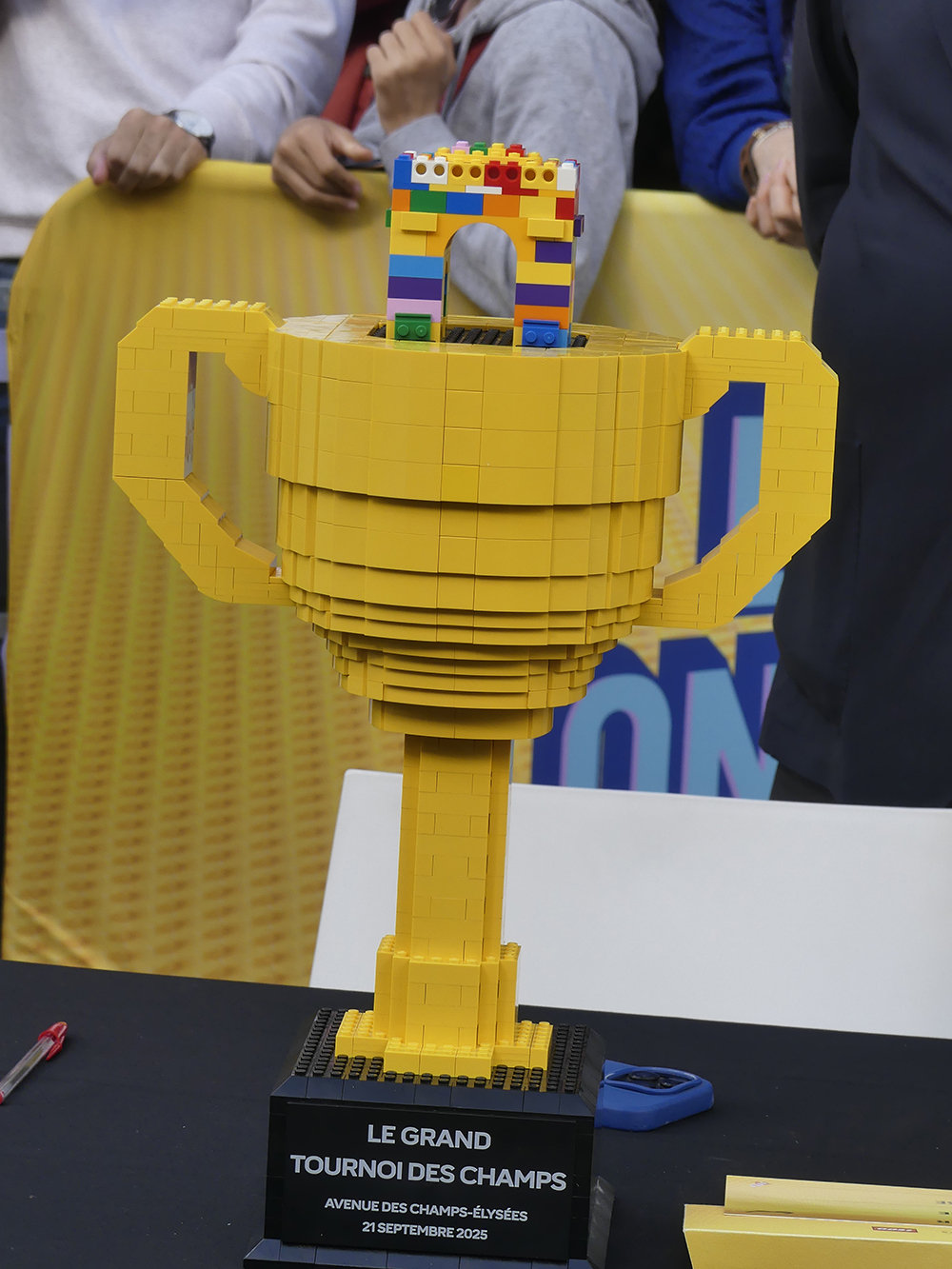
This afternoon, the Champs-Élysées took on an entirely new identity as it became the stage for an extraordinary cultural experiment: the transformation of the world’s most famous avenue into a living construction site of imagination and heritage, thanks to LEGO®. As part of the inaugural Triomphe du Patrimoine, organized during the European Heritage Days, the Comité Champs-Élysées invited Parisians, families, and visitors from around the world to rediscover their city through the universal language of play. The highlight was an unprecedented exhibition of monumental LEGO models, including a breathtaking reconstruction of the Champs-Élysées itself, stretching nearly five meters in length. Months of meticulous work went into replicating every detail: the perspective of the avenue, the alignment of the trees, the architecture of the façades, and even the pattern of the paving stones. For passersby, the effect was immediate and almost magical—a familiar landscape made suddenly new, reimagined with precision and whimsy through the humble brick.
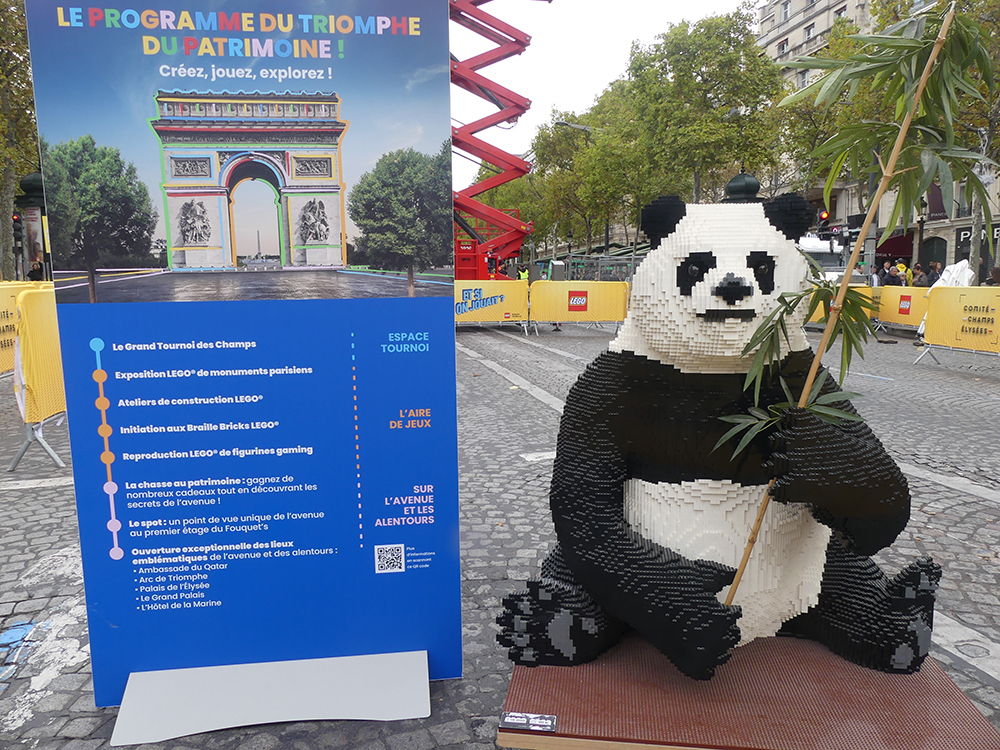
But the event was never meant to be a static display. In the spirit of the Comité’s long-standing mission to turn the avenue into a stage for collective celebration, a massive LEGO building tournament took over the Champs-Élysées earlier in the day. No less than 256 teams—children, parents, friends, and enthusiasts—took part in this grand challenge, competing in creativity and speed under the open sky of Paris. The atmosphere was joyful and electric, with participants assembling towers, arches, and playful reinterpretations of Parisian monuments, cheered on by the crowd. At the heart of the competition stood a jury of prestige, including internationally renowned architect and Académie des Beaux-Arts member Jean-Michel Wilmotte, alongside Marc-Antoine Jamet, president of the Comité Champs-Élysées. Together they judged the works not only on technical skill but on imagination and boldness, awarding the victorious team an exceptional prize: a trip to Copenhagen, the birthplace of LEGO and a fitting reminder of the cultural ties that quietly connect Denmark and the Champs-Élysées. The choice was deliberate, echoing the Danish presence that has long marked the avenue, from the famed Restaurant Copenhague to the Scandinavian church and the red-and-white flag flying proudly at number 142.
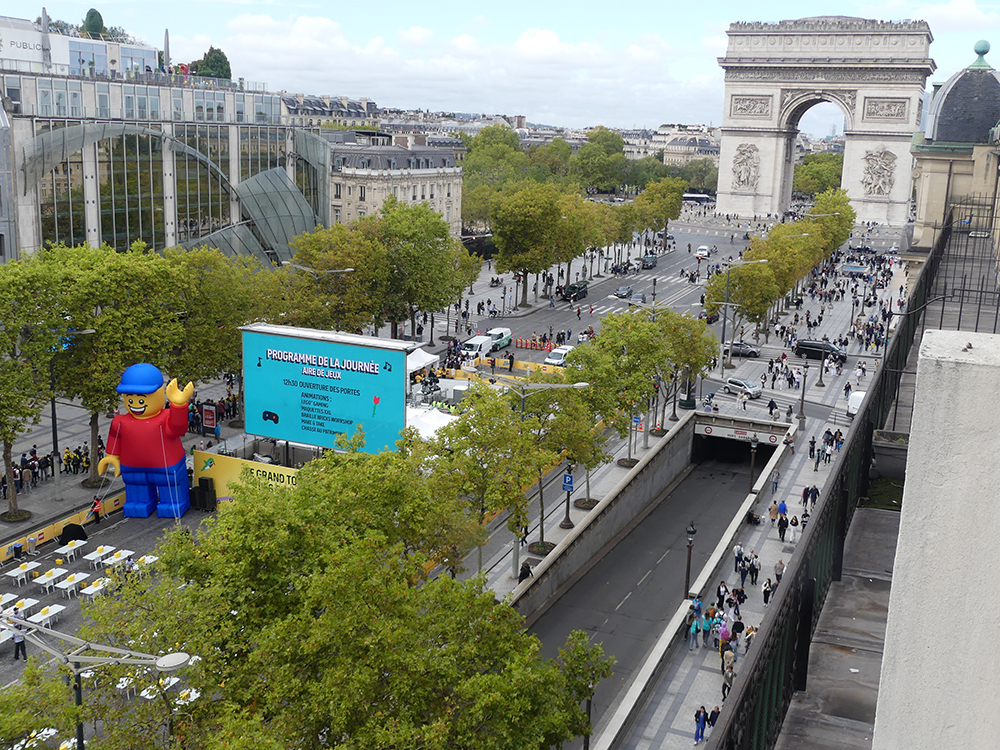
The monumental LEGO creations went beyond mere spectacle; they offered a new lens on the very idea of heritage. Alongside the Champs-Élysées reproduction stood brick-built icons of Paris, including the Eiffel Tower and the cathedral of Notre-Dame, recreated at a scale that was both impressive and endearing. These were not simple toys enlarged, but carefully conceived tributes to the genius of Parisian architecture, demanding the same kind of patience, vision, and respect for detail that their real counterparts required from engineers and artisans centuries ago. To enrich the experience, conference guides were on hand to reveal the hidden stories behind the models and to link the act of construction with the larger history of the city. In doing so, the event blurred the line between childhood wonder and adult reverence, proving that heritage is not only about preservation but also about re-creation and imagination. As Marc-Antoine Jamet himself put it in his editorial, “Paris was not built in a single brick”—a reminder that history is a long process, yet one that can be celebrated in miniature through acts of play.
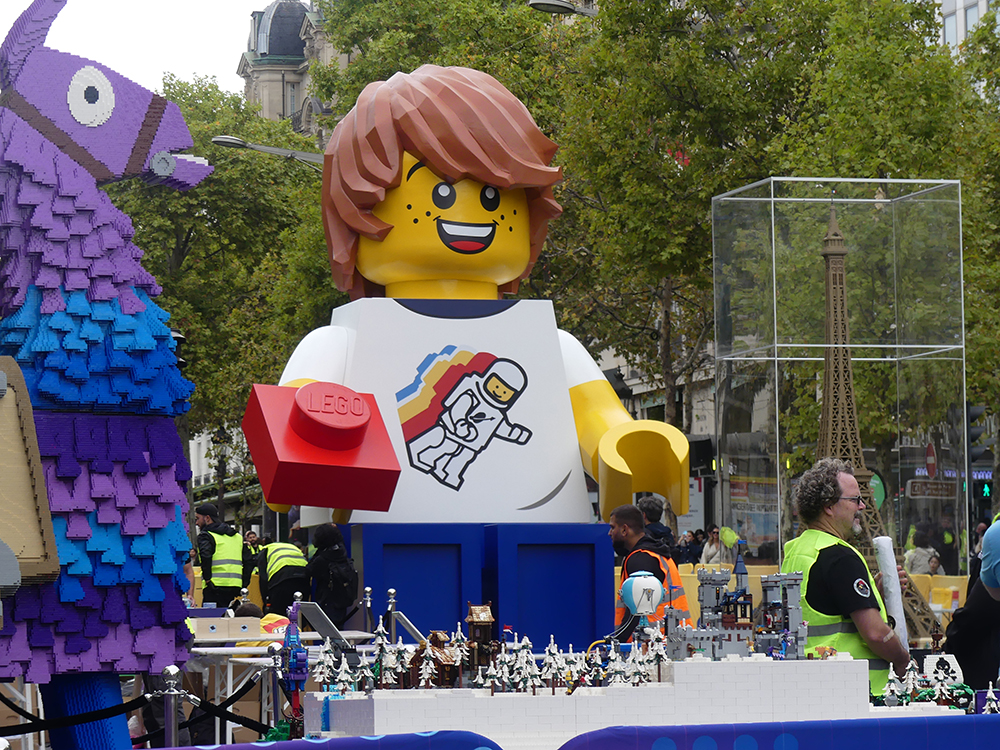
The presence of LEGO on the Champs-Élysées this afternoon symbolized more than a playful diversion. It reflected a deeper ambition of the Comité Champs-Élysées: to reconcile Parisians with their avenue and to turn heritage into an active, participatory experience rather than a static backdrop. Over the past years, the Comité has organized events as diverse as giant outdoor dictations, cinema screenings under the stars, carnivals, and even playful reinterpretations of childhood games on a monumental scale. With the Triomphe du Patrimoine, the avenue once again became a public theater, proving that heritage can be both educational and entertaining, both respectful of the past and open to reinvention. The LEGO partnership, with its combination of scale, creativity, and accessibility, embodied this philosophy perfectly. Children built alongside their grandparents, tourists photographed alongside locals, and everyone left with the sense that the Champs-Élysées is not only a symbol of French grandeur but also a place where people can play, dream, and create together.
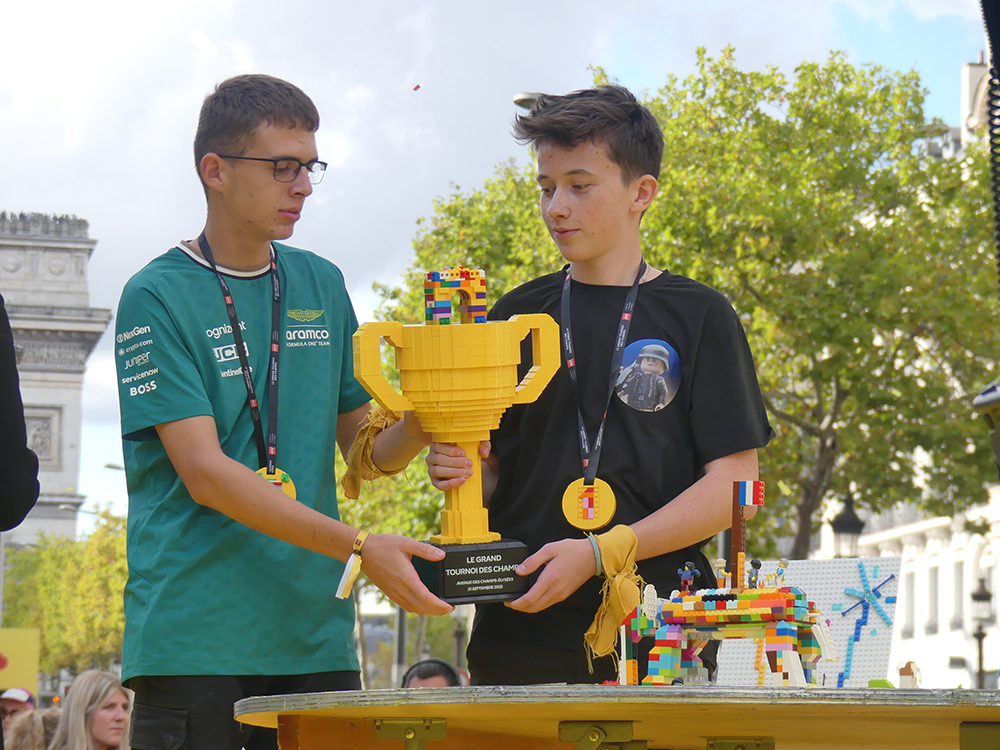
The triumph was not only architectural or aesthetic but emotional. By bringing LEGO to the heart of Paris, the Comité Champs-Élysées offered proof that heritage thrives when it is lived and shared. The Champs-Élysées, often seen as a showcase of luxury and spectacle, became for one afternoon an open playground where the grandeur of the past was reimagined in the colorful bricks of the present. And as the sunlight faded on the avenue, one could feel that this event was not just another addition to the city’s cultural calendar, but a statement of intent: to make the Champs-Élysées a place of joy, curiosity, and collective creation. For a few hours, history was not only remembered but rebuilt, one LEGO brick at a time.
You can discover our photos in our Flickr page
Photos & video : Boris Colletier / Mulderville

